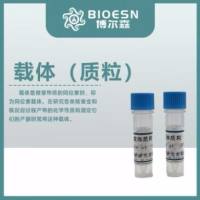Generation of Cre Recombinase-Expressing Transgenic Mice Using Bacterial Artificial Chromosomes
互联网
985
Generation of genetically modified mice is one of the primary methods for understanding gene function. In particular, approaches that allow for restricting the effects of a mutation to defined cell-types are fundamental for understanding the roles of genes in specific cells or tissues. The Cre/loxP recombination system is the most robust approach to produce cell-type-specific gene inactivation. When the Cre recombinase is expressed from a transgene containing a tissue-type-specific promoter it will delete genomic segments flanked by loxP sequences in this tissue only. In this regard, the selectivity and reproducibility of Cre expression is absolutely critical for the result. To meet these requirements large constructs based on bacterial artificial chromosomes (BACs) have been successfully used. Here we present a protocol for the generation of constructs in which the Cre recombinase or a tamoxifen-inducible Cre fusion protein, are inserted at the translation start sequence of a BAC-derived gene. We describe all the critical steps, including construct-design, recombineering, and preparation of the transgene-containing genomic fragment for pronuclear injection and identification of “founder” animals among the resulting offspring. In our experience, the use of this protocol typically results in specific and transgene copy number-dependent expression of the Cre recombinase.









